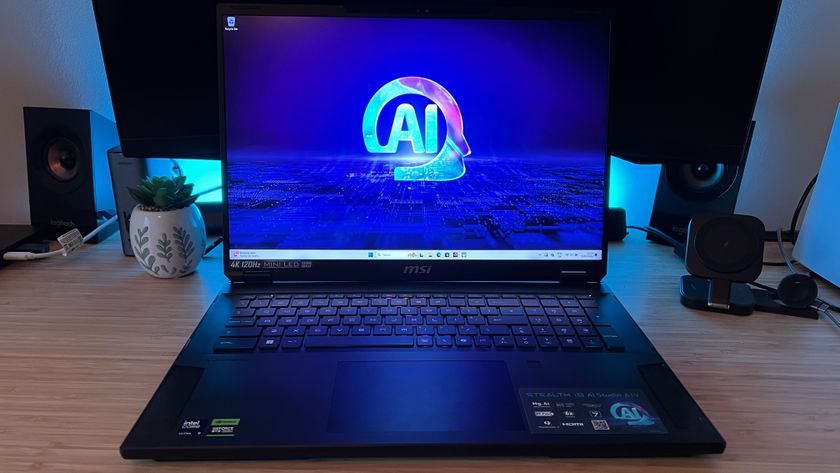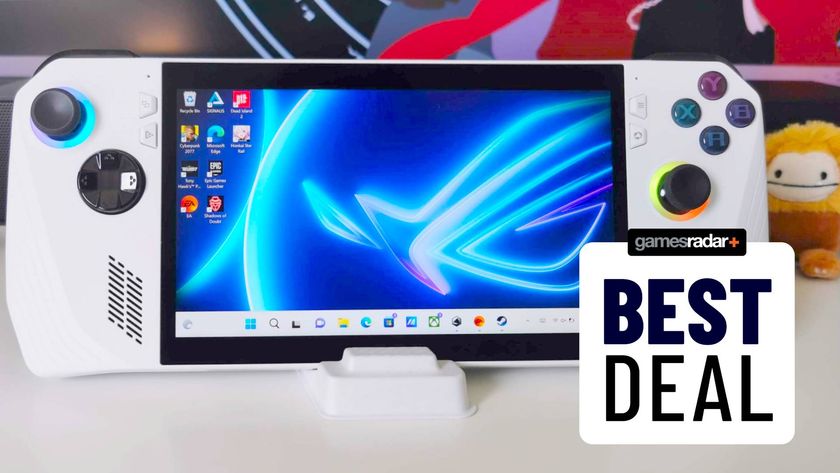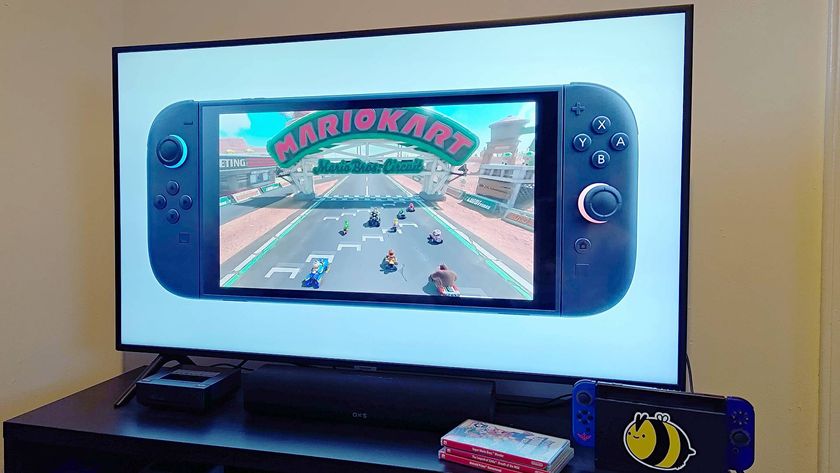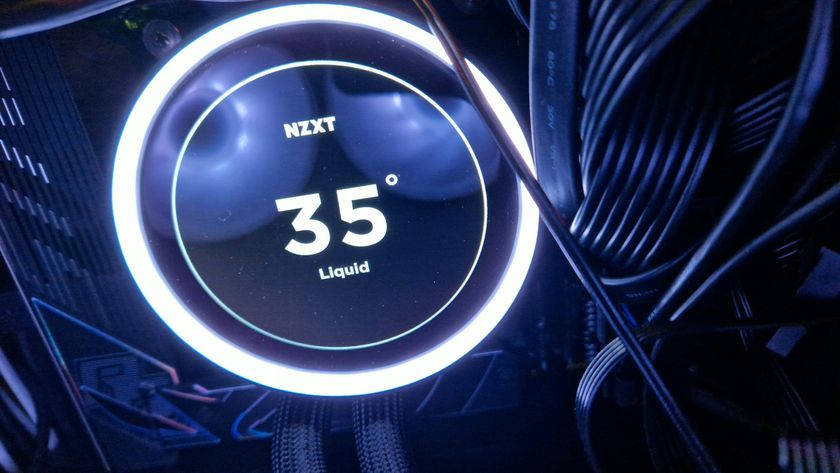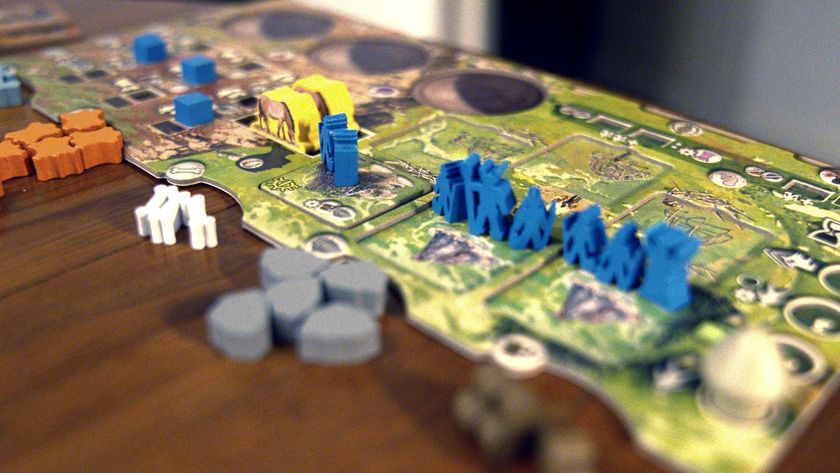12DOVE Verdict
It has a price tag that’ll scare many off, but the Ayaneo 2S establishes a high handheld gaming PC performance bar. While comparing its lavish specs and build quality to the Steam Deck may feel a little unfair, the premium device provides a glimpse into the future of mainstream portable gaming. There’s also a case to be made for picking up this portable powerhouse over a conventional gaming laptop since it uses Windows 11, but its included software is rough around the edges.
Pros
- +
Fantastic portable performance
- +
Comfortable to hold
- +
Bezel-less screen
- +
Full PC compatibility
Cons
- -
Lofty price point
- -
Included software needs some work
Why you can trust 12DOVE
I’ve been using the Ayaneo 2S in place of my Steam Deck for just over a month now, and the handheld gaming PC feels like a glimpse into the future. I’m not saying the pricey competitor gets everything right, nor am I suggesting that you should fork out for the 2S over Valve’s portable powerhouse. However, the console-like Windows 11 system really struts its stuff when it comes to gaming performance, building upon new standards established by the Asus ROG Ally just a few months ago.
With prices starting at $999, the Ayaneo 2S is firmly a member of the premium handheld gaming PC club. Its exuberant cost is matched by exceptional portable performance, lavish build quality, and a bunch of features you won’t find in cheaper systems. Just like the Asus ROG Ally, it runs Windows 11, which effectively breaks down compatibility barriers that the Steam Deck regularly has to vault across. That said, using Microsoft’s operating system is a double edged sword, and Ayaneo’s included software sharpens the point.
It feels like Ayaneo is consistently sending portable warriors onto the portable battlefield, as the Ayaneo 2 only arrived six months ago. The company also just revealed the Ayaneo KUN, a chonky 8.5-inch handheld that’ll place even more of a gap between the Steam Deck and premium alternatives. While I’m not going to let those portable’s distract you in this Ayaneo 2S review, it’s worth keeping the rapidly evolving nature of the handheld gaming PC scene in mind throughout, as standards could dramatically change by the time the Steam Deck 2 rolls into town.

Specs
Before we dive into the deep end of the handheld’s capabilities, let’s swim through Ayaneo 2S specs. Armed with an AMD Ryzen 7 7840U APU and a 7-inch IPS 1200p screen, you can already tell this handheld intends to punch harder than the Steam Deck. I’d say it gives the Asus ROG Ally a run for its money, but the Ryzen Z1 Extreme is a similar beast to Ayaneo’s chip of choice, and the Ally’s display trades resolution for an 120Hz refresh rate.
| Specs | Ayaneo 2S | Asus ROG Ally | Steam Deck |
|---|---|---|---|
| Price | From $999 | $699.99 | From $399 |
| CPU | AMD Ryzen 7 7840U | AMD Ryzen Z1 Extreme | AMD Custom APU (Van Gogh) |
| GPU | AMD Radeon 780M | AMD Radeon RDNA 3 | AMD Radeon RDNA 2 |
| RAM | Up to 64GB | 16GB | 16GB |
| Storage | Up to 4TB | 512GB | 512GB |
| Display | 7-inch 1200p IPS touchscreen | 7-inch 1080p IPS touchscreen | 7-inch 800p IPS touchscreen |
| Battery | 13050mAh (50.25Wh) | 5200mAh (40Wh) | 5,313mAh (40Wh) |
| Operating system | Windows 11 | Windows 11 | SteamOS |
| Size | 264.5mm x 105.5mm x 21.5mm | 280mm x 111mm x 21.2mm | 298mm × 117mm × 49mm |
| Weight | 667g | 669g | 608g |
The specific Ayaneo 2S model I’ve been testing is the ‘Retro Power’ edition, kitted out with 32GB RAM and a spacious 2TB NVMe SSD. The extra memory and storage will set you back $1,299, but you can opt for the base model with 16GB RAM and a 512GB drive if you’d rather save $300. All models come with a 13050mAh battery that provides 50.25Wh on paper, and aesthetics aside, the design and features included all remain the same.
In the box, you'll find the handheld itself accompanied by a GaN 100W fast charger, complete with a USB-C Power Delivery port and two additional USB A ports. Pretty impressive for an included power brick, as I'm used to seeing adapters that serve a single purpose.

Features
Speaking of which, the Ayaneo 2S has plenty of features to flaunt, even if it doesn’t really break the handheld PC mould. At a glance, the premium portable looks fairly vanilla, with face buttons, analogue sticks, and a traditional D-pad occupying the front. Its triggers and bumpers aren’t particularly quirky looking either, with smaller top buttons being the only noticeable extra on top.
Upon closer inspection, you’ll find that the black power button at the top of the system doubles as a fingerprint reader. This is something the Asus ROG Ally includes with its package, and it saved me trying to awkwardly punch in passwords using the touch screen. It sounds like I’m dismissing the rest of the buttons that the 2S wields, but while they look tame, Ayaneo has actually included pretty nifty hall effect joysticks and triggers, and they feel pretty premium to the touch.
Same goes for the face buttons and D-pad, which all produce a satisfying click when pressed. While the X, Y, A and B buttons stick with traditional membrane pads underneath, those top buttons above use satisfying mechanical switches, an extra that makes me wish the same approach was used throughout. It’s not a deal breaker, but I’m used to using a Thrustmaster eSwap Pro PC controller regularly, and I’d have loved to see the same kind of switches featured in the handheld.

As for IO, the Ayaneo 2S boasts three USB-C ports, a headphone jack, and a microSD card slot. In a sense the fact it has more than one USB-C input means you won’t need to pick up a compatible Steam Deck dock, as the top left one has 8K@60Hz DisplayPort abilities. Nevertheless, it does work wonderfully with the likes of the Baesus 6-in-1 docking station, so you'll definitely be able to use it as a hybrid desktop PC.
On the software side of things, we have Windows 11 paired with Ayaneo Space, the company’s answer to Asus Armoury Crate and Steam Big Picture. The app will gather installed games and host them within one library, and you’ll also be able to tweak settings, customise triggers and sticks, and add quick menu shortcuts to things like AMD FSR and on screen keyboards.
While the AyaSpace app works, it’s extremely rough around the edges, and has a long way to go before it helps Windows 11 feel consolised. I actually mostly placed the software to one side and used individual launchers and Windows 11 settings, as the temperamental nature of the app was a bit of a bugbear. It only takes a few unresponsive presses for me to go hunting for an alternative, and that was certainly the case this time around.
Ayaneo has the right idea with Ayaspace, and I’m holding out for an improved version in the future. That said, it’s definitely one of the Ayaneo 2S’ weak points, and it’s certainly not the Windows 11 optimization solution I’ve been waiting for. Thankfully, it weirdly feels like the handheld plays nicer with Microsoft’s OS this time around anyway, and I’ll get onto why it feels smoother than the Asus ROG Ally in a bit.
Design

Boasting an overall oval shape not unlike a very chonky PSVita, the Ayaneo 2S is a bit of a looker. Again, it doesn't do anything drastic on the layout front, committing to the same layout as the Nintendo Switch and various other handhelds. Yet, there’s something slick about the subtle accents worn by the portable, consisting of a contrasting mix of mat and glossy plastic.
Since I’m using the ‘Retro Power’ version, it feels only fair to comment on the variant’s color scheme. It primarily wears a beige shell that’s best described as a cross between the Commodore 64 and Nintendo Famicom, with flashes of maroon and khaki on the buttons and switches contributing a pop of vibrancy. It’s certainly different, and I imagine it’s not going to be to everyone’s tastes. Personally, I dig it, and I kind of want to pitch it next to an old beige CRT monitor to make a retro futurist setup.
Everything PC related seems to be clad with RGB these days, and I’m not always into it. That makes me sound like I’m old and bitter, but the Ayaneo adds subtle lighting to its thumbsticks that is both elegant and effective. The gentle glow pairs nicely with the aluminium base of each stick, adding just enough to both justify its presence and avoid being a garish distraction.

The 2S’ edge to edge bezel-less screen is also pretty striking, and it occupies most of the handheld’s vertical space. It might be the same size as the Steam Deck, but Ayaneo’s display looks like it’s bigger, and it’s an illusion I appreciate. I guess it’d look even better on the black model, but I wouldn’t let that influence your aesthetic decisions.
Not to dunk on the Asus ROG Ally or the Steam Deck, but it’s refreshing using a handheld PC that doesn’t have a precariously placed B button. For whatever reason, Valve’s decided to have theirs almost dripping off the left hand side, and the Asus ROG Ally’s face buttons live on the edge too. The buttons themselves are slightly smaller, but my thumb feels more comfortable dwelling further left.
I also prefer the asymmetrical stick layout used by the Ayaneo 2S, especially compared to the almost Wii U inspired approach of the Steam Deck. That’s a completely subjective take, but it’s one I think is important to share, as it dramatically influences personal comfort levels. So, if you vibe with that opinion, you can rest assured that your thumbs probably will too.
Weighing in at 667 grams, the Ayaneo 2S is a bit of a chonk, and I immediately noticed the difference between the ultra lightweight Logitech G cloud and this handheld. That might sound like a daft comparison to make, but I’d spent a significant amount of time the week before starting this review with the streaming device, and it got me thinking about the hefty weight of handheld PCs in general. Sure, the G Cloud doesn’t have much going on inside, but using the Ayaneo 2S over something like the Nintendo Switch will give your hands a workout.
Performance

Great looks and fancy features mean nothing if runs games like a slideshow, so let’s delve into Ayaneo 2S performance figures. Since we’re effectively dealing with a Windows 11 PC, I decided to put it through the same benchmarks as a gaming laptop or rig, but made a few tweaks to the process to keep things fair.
For example, I decided to opt for ‘low’ settings during my benchmark tests, as doing so will give you a feel for how far you can boost fps using the Ayaneo 2S. I also decided to stick with three slightly different resolutions, namely 1200p, 1080p, and 800p. The latter is the Steam Deck’s default, meaning using it serves as a good comparison point between the two handhelds.
| Header Cell - Column 0 | 800p | 1080p | 1200p |
|---|---|---|---|
| Cyberpunk 2077 | 60fps | 48fps | 35fps |
| Hitman 3 | 53fps | 75fps | 70fps |
| Shadow of the Tomb Raider | 66fps | 51fps | 48fps |
| Returnal | 37fps | 28fps | 33fps |
The point of these Ayaneo 2S benchmarks isn’t to see how much it outperforms the Steam Deck. However, I think Valve’s handheld serves as a good baseline, as it offers a similar experience at a much lower price point. If you’re going to drop a grand on a handheld gaming PC, you’ll want to see a significant performance gap between the two devices, even if the Ryzen 7 7840U APU isn’t the sole reason why it’s more expensive.


Thankfully, the Ayaneo 2S does full through in the performance department, and I’m pretty pleased with the frame rates it provides across the board. All the above tests are conducted with GPU upscaling switched off, meaning you could boost things further using AMD FSR or Intel XeSS.
Starting off with Cyberpunk 2077, I was able to squeeze 36fps out of the Ayaneo 2S at 1200p. Coincidentally, this is the exact figure I achieved using the Asus ROG Ally at 1080p, which suggests Ayaneo’s handheld has an edge in the demanding shooter. That figure jumps way up to 60fps when playing at 800p, and it’s needless to say the Steam Deck can’t remotely replicate that.
I experienced similar results while testing Hitman 3, as I managed to pull off 75fps at native resolution. I was also pleased to see decent performance in Shadow of the Tomb Raider, but I can’t help but feel disappointed by my Returnal results. Don’t get me wrong, the PS5 game is still playable, but I think casually playing Spider-Man Remastered at roughly 60fps average outside of the benchmark tests set my expectations too high. I actually experienced a performance drop playing at 1080p compared to 1200p, but I've yet to work out why.

During testing, I kept an ear out for the Ayaneo 2S’ fans, as I wanted to see whether its punchy performance efforts would produce a racket. Thankfully, I didn’t actually experience anything too disruptive during regular play, but things did get a bit wooshy while benchmarking Hitman 3. Admittedly, I was sitting in silence when I noticed the noise, and the handheld’s speakers have enough oomph to mask the residual cooling acoustics.
Of course, any audible noise is going to good use, as it means the cooling system within is working. Ayaneo’s graphene layer and copper tubing dispersion system does a commendable job at keeping temps low, as I didn’t see things reach above 60°c. That’s with fans set to balanced mode too, so I reckon you could really combat high temperatures further if you place the handheld under extreme load.
Battery life is one of the biggest performance factors to consider when choosing a handheld, and the Ayaneo 2S is no exception. How long you get out of the device is fully dependent on how hard you push it, as you can dial back APU wattage using Ayaspace. For the sake of general use testing, I stuck with 22W watt ‘Game Mode’ while playing Spider-Man: Remastered in my spare time, and managed to keep playing for around two hours. Not ideal if you’re planning a long trip away from power outlets, but not exactly out of the norm for portable PCs of this calibre.

Before I wrap up, I want to circle back to my points about Windows 11 made earlier, as the operating system actually feels pretty good on the Ayaneo 2S. By that, I mean I didn’t encounter the same issues as with the Asus ROG Ally, as games would launch properly with fully functioning controls and all. I still found launching applications with the touch screen tough at times, and I’m hoping Microsoft eventually optimises Windows 11 for handhelds, but I’ve got far fewer complaints this time around with the platform.
That said, Ayaneo could tighten things up further by getting rid of some of the Windows 11 junk. I’m not saying no one is going to use Microsoft Teams on the Ayaneo 2S, but that’s sort of exactly what I’m saying, and there’s no reason for it to be a start up application.

Should you buy the Ayaneo 2S?
Not everyone will be into the idea of spending a grand on a handheld gaming PC. However, if the Steam Deck can’t satiate your hunger for portable power, the Ayaneo 2S will deliver. I’d only suggest getting one if you’re comfortable with gaming using Windows 11, as AyaSpace isn’t as slick to navigate as SteamOS or the Nintendo Switch.
That said, there’s a case to be made for opting for a handheld like this over a gaming laptop, as if you’re planning on playing games with a controller anyway, this portable is a powerful stand in. Even if you do find yourself itching to play mouse and keyboard games, or require something for productivity, you could plug the device into a dock and use it just like a conventional PC.
Ultimately, whether or not you should pick up an Ayaneo 2S depends on both your budget and handheld aspirations. If you’re planning on chipping away at your ageing Steam library backlog and playing a few indies, the Steam Deck will more than do the trick. For those of you looking to play some newer releases with decent settings, the Asus ROG Ally also has your back. However, if you’re itching to play demanding games and maintain more than playable frame rates, the Ayaneo 2S has the best chance of fulfilling your on the go desires.
How we tested the Ayaneo 2S
Over the course of a month, I used the Ayaneo 2S in place of my Steam Deck, playing games both at home and away. I played Spider-Man: Remastered in my spare time using the Epic Game Store, while my included benchmarks use a mix of Steam and EGS game versions.
While at my desk, I used the Baseus 6-in-1 docking station to hook the handheld up to my desk setup, which allowed me to test Windows 11 general use scenarios. I am actually using the Ayaneo 2S to write this review and carry out daily tasks like answering emails.
If you'd like to learn more about how we test handhelds and other portable systems, check out our Hardware Policy for more details.

I’ve been messing around with PCs, video game consoles, and tech since before I could speak. Don’t get me wrong, I kickstarted my relationship with technology by jamming a Hot Wheels double-decker bus into my parent’s VCR, but we all have to start somewhere. I even somehow managed to become a walking, talking buyer’s guide at my teenage supermarket job, which helped me accept my career fate. So, rather than try to realise my musician dreams, or see out my University degree, I started running my own retro pop culture site and writing about video games and tech for the likes of TechRadar, The Daily Star, and the BBC before eventually ending up with a job covering graphics card shenanigans at PCGamesN. Now, I’m your friendly neighbourhood Hardware Editor at GamesRadar, and it’s my job to make sure you can kick butt in all your favourite games using the best gaming hardware, whether you’re a sucker for handhelds like the Steam Deck and Nintendo Switch or a hardcore gaming PC enthusiast.




